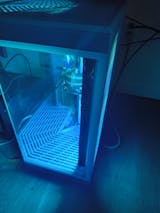Unlike console games, PC games are optimized to accommodate a wide variety of hardware sizes and settings. One of the most highly contested topics in PC gaming concerns frame rate and performance. Finding the balance between quality and performance can be difficult, but we have the experience and know-how needed to learn more about FPS control methods. In this article, we will take a closer look at FPS, most popular settings, and ways to increase FPS in the games you play most often.
What is FPS?
FPS is an abbreviation for frames-per-second, which is essentially the measurement of how many images a GPU can render and how many images are being displayed on a monitor every second. If a video game runs at only one frame per second, the experience might seem more like viewing a slideshow presentation. You’ll need a faster frame rate to enjoy a real-time experience and make the most of the game’s performance. The more frames your GPU renders, the smoother the experience will be overall.
Different FPS Settings
Although many of us use our eyes in everyday life to discern differences, even these advanced organs can’t tell the difference in terms of a few frames. We rounded up some of the most popular FPS settings for you to consider.
- 30 FPS: Console and lower-end PCs use 30 FPS as a benchmark, which is 10 FPS above the stuttering rate. This frame rate is great for single-player gaming and enthusiasts that want more of a cinematic experience.
- 60 FPS: Most gaming PCs use 60 FPS as a benchmark. Less demanding console games can manage 60 FPS. This frame rate is only conducive to competitive multiplayer games or those in which animation is key.
- 120 FPS: Only monitors with 144-165 Hz refresh rates can manage 120 FPS. This frame rate is only applicable to competitive gamers with high-end gaming PCs.
- 240 FPS: Only monitors with 240 Hz refresh rates and the most powerful hardware can manage 240 FPS. This frame rate is only applicable to competitive gamers who can afford high-end hardware.
Increasing FPS in Games
There are several ways you can stretch your FPS to improve the gaming experience overall. Start by inspecting the drivers for your graphics card. PC pop-up notifications will typically let you know when a new driver is available, but you can also download the latest driver from Intel, NVIDIA, or AMD. Driver updates can help you gain a 30-percent performance boost. If you have already updated your driver, try optimizing the settings of your game. Double check your monitor’s resolution and lower it to gain more frames per second. Load the game and disable the anti-aliasing settings to see if improves gameplay performance. You can reduce the impact of lighting effects by experimenting with draw distance and shadows. Otherwise, you can overclock your hardware or use optimization software.
Conclusion
In a nutshell, 30 FPS is more than enough for gaming enthusiasts that prefer single-player. Competitive gamers will ideally need 60 FPS to play multiplayer. There may be minimal improvement between 120 and 240 FPS, but these two frame rates are more than enough for hardcore gaming enthusiasts that need the competitive edge. We wouldn’t recommend that you run out and invest in high-end monitors with 100+ Hz refresh rates or hardware that’s capable of handling 100+ frames per second.













